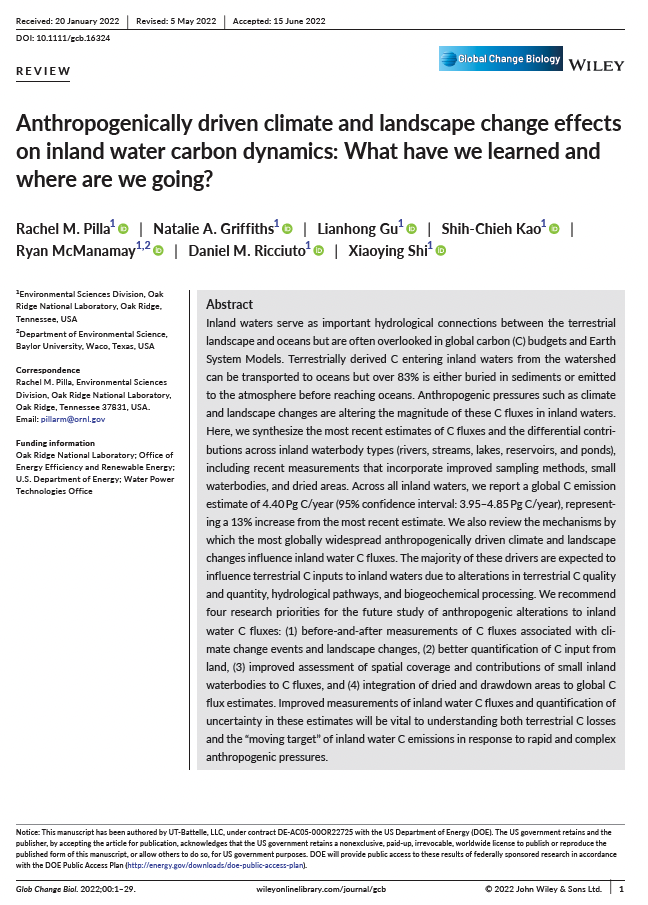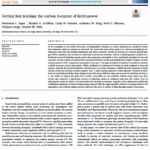Abstract: Inland waters serve as important hydrological connections between the terrestrial landscape and oceans but are often overlooked in global carbon (C) budgets and Earth System Models. Terrestrially derived C entering inland waters from the watershed can be transported to oceans but over 83% is either buried in sediments or emitted to the atmosphere before reaching oceans. Anthropogenic pressures such as climate and landscape changes are altering the magnitude of these C fluxes in inland waters. Here, we synthesize the most recent estimates of C fluxes and the differential contributions across inland waterbody types (rivers, streams, lakes, reservoirs, and ponds), including recent measurements that incorporate improved sampling methods, small waterbodies, and dried areas. Across all inland waters, we report a global C emission estimate of 4.40 Pg C/year (95% confidence interval: 3.95–4.85 Pg C/year), representing a 13% increase from the most recent estimate. We also review the mechanisms by which the most globally widespread anthropogenically driven climate and landscape changes influence inland water C fluxes. The majority of these drivers are expected to influence terrestrial C inputs to inland waters due to alterations in terrestrial C quality and quantity, hydrological pathways, and biogeochemical processing. We recommend four research priorities for the future study of anthropogenic alterations to inland water C fluxes: (1) before-and-after measurements of C fluxes associated with climate change events and landscape changes, (2) better quantification of C input from land, (3) improved assessment of spatial coverage and contributions of small inland waterbodies to C fluxes, and (4) integration of dried and drawdown areas to global C flux estimates. Improved measurements of inland water C fluxes and quantification of uncertainty in these estimates will be vital to understanding both terrestrial C losses and the “moving target” of inland water C emissions in response to rapid and complex anthropogenic pressures.
Authors: Rachel M. Pilla, Natalie A. Griffiths, Lianhong Gu, Shih-Chieh Kao, Ryan McManamay, Daniel M. Ricciuto, Xiaoying Shi


